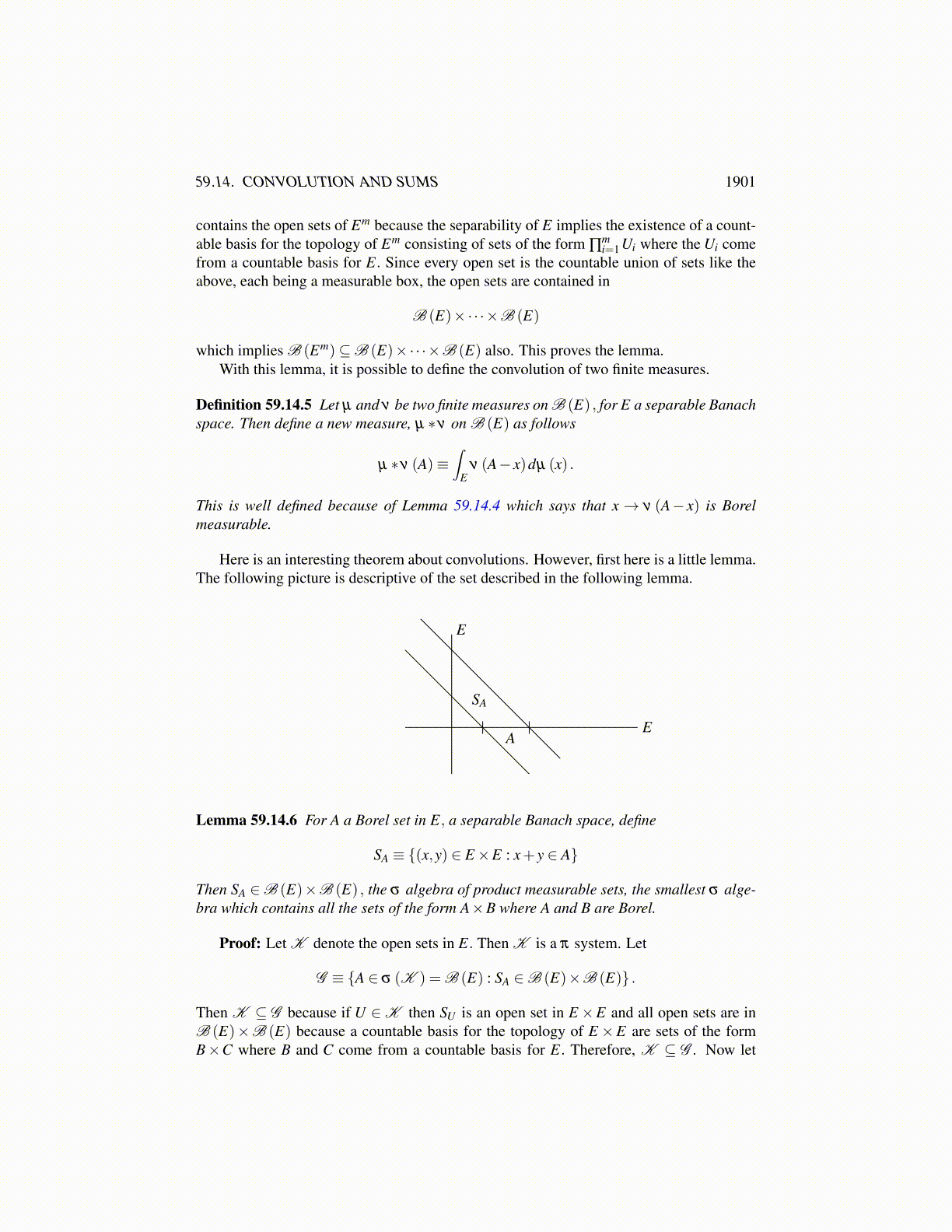
59.14. CONVOLUTION AND SUMS 1901
Theorem 59.14.3 Let µ be a finite measure on B (E) where E is a separable Banach spaceand let f ∈ Lp (E; µ) . Then for any ε > 0, there exists a uniformly continuous, bounded gdefined on E such that
|| f −g||Lp(E) < ε.
Proof: As usual in such situations, it suffices to consider only f ≥ 0. Then by Theorem11.3.9 on Page 241 and an application of the monotone convergence theorem, there existsa simple measurable function,
s(x)≡m
∑k=1
ckXAk (x)
such that || f − s||Lp(E) < ε/2. Now by regularity of µ there exist compact sets, Kk and
open sets, Vk such that 2∑mk=1 |ck|µ (Vk \K)1/p < ε/2 and by Corollary 59.14.2 there exist
uniformly continuous functions gk having values in [0,1] such that gk = 1 on Kk and 0 onVC
k . Then consider
g(x) =m
∑k=1
ckgk (x) .
This function is bounded and uniformly continuous. Furthermore,
||s−g||Lp(E) ≤
(∫E
∣∣∣∣∣ m
∑k=1
ckXAk (x)−m
∑k=1
ckgk (x)
∣∣∣∣∣p
dµ
)1/p
≤
(∫E
(m
∑k=1|ck|∣∣XAk (x)−gk (x)
∣∣)p)1/p
≤m
∑k=1|ck|(∫
E
∣∣XAk (x)−gk (x)∣∣p dµ
)1/p
≤m
∑k=1|ck|(∫
Vk\Kk
2pdµ
)1/p
= 2m
∑k=1|ck|µ (Vk \K)1/p < ε/2.
Therefore,|| f −g||Lp ≤ || f − s||Lp + ||s−g||Lp < ε/2+ ε/2.
This proves the theorem.
Lemma 59.14.4 Let A ∈B (E) where µ is a finite measure on B (E) for E a separableBanach space. Also let xi ∈ E for i = 1,2, · · · ,m. Then for x ∈ Em,
x→ µ
(A+
m
∑i=1
xi
), x→ µ
(A−
m
∑i=1
xi
)